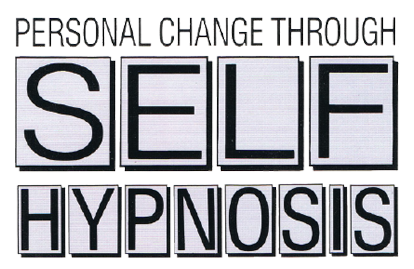Personal Change Through Self-Hypnosis: Foreword
I graduated in psychology from the University of New South Wales in 1970 and have worked as a counsellor to university students and staff, at an employee assistance company and in private practice since then.
I began writing this book in 1980 after discovering that self-hypnosis is at least twice as effective as hypnosis by another person (hetero-hypnosis) for reduction or cessation of smoking cigarettes. I believe this also to be the case for other complex issues, such as eating disorders, substance abuse, and gambling.
The book was published in seven countries, including Italy and Iceland.
In the book I have tried to replace popular misconceptions of hypnosis with the concept of the acceptance of suggestions to promote positive change. By reading this book you will also become aware of the significant contribution Australian practitioners and researchers have made to the practice and study of hypnosis around the world..
In addition to theories and known facts about hypnosis, the book contains basic hypnosis scripts and more than 70 specific scripts. The book, hypnosis recordings and scripts are available by using the link Shop: Buy the Book, Recordings and Scripts. The recordings were constructed because it became apparent that not everyone was willing to make their own recording. My partner, Bill Peach (1935-2013) constructed 5 recordings before he became too ill, and I completed the project in 2014.
I have reprinted the book to accompany the recordings and the scripts. It is helpful to understand many things about hypnosis before you embark on your own project.
While the references in the book are obviously dated I find that none of the more recent findings negates or casts doubt on any of the material within.
There have been some fresh therapeutic approaches, in particular Acceptance and Commitment Therapy and the valuable concept of Mindfulness.
However, at the 20th International Congress of Hypnosis and Psychosomatic Medicine (held every three years) in Paris in August 2015, researchers and practitioners were still attempting to understand and explain the phenomenon of hypnosis.
They were in little doubt that hypnosis had established itself as a legitimate treatment method, partly due to advances in brain imaging (the changes in brain activity during hypnosis are startling) and neuroscience. There was a large increase in the number of papers presented by doctors and dentists using hypnosis as anesthesia for complex surgery. However, theories presented at the Congress, some involving electrodynamics, quantum physics, string theory, chaos theory and neuroplasticity, did little to shed light on the subject.
Some of the current research evaluated the use of hypnosis to treat a variety of disabling conditions – post-traumatic stress disorder, anxiety, chronic pain, depression, cancer, allergies – and some tried to increase hypnotizability in experimental subjects by various means, to no avail. Many years ago my friend and colleague dr. Barbara Newton based her Ph.D. on driving brain-waves to increase hypnotizability, also to no avail. This does not imply these experiments failed, but they do imply that hypnosic susceptibility is not amenable to manipulation.
There were very few papers on self-hypnosis, and none of them dealt with people making recordings of their own hypnosis scripts.
In my experience the expectation of success with either self-hypnosis or hetero-hypnosis ranges from close to 100% for concentration, motivation and exam nerves (particularly the latter), slightly less for public speaking, public performance and job interviews, still high for sporting improvement, anxiety symptoms and sleeping disorders.
I presented my smoking cessation findings at the same Congress almost 40 years earlier, in The Hague, Netherlands, in 1978. Subjects using self-hypnosis showed a 75% drop in consumption and a 50% complete cessation rate. The group undergoing hetero-hypnosis were between half and a third as successful. When evaluating success rates it helps to keep in mind that there is roughly a 20% spontaneous recovery rate for most issues.
Individuals differ and in my experience no amount of theorising or testing for hypnotizability will predict what will actually work for a particular person. The worst outcome is that nothing will change. In my 50+ years as a qualified psychologist and hypnosis practitioner there have been no untoward incidents.
Copies of the book, hypnosis recordings and scripts are available by using the link Buy the Book, Recordings and Scripts.
I graduated in psychology from the University of New South Wales in 1970 and have worked as a counsellor to university students and staff, at an employee assistance company and in private practice since then.
I began writing this book in 1980 after discovering that self-hypnosis is at least twice as effective as hypnosis by another person (hetero-hypnosis) for reduction or cessation of smoking cigarettes. I believe this also to be the case for other complex issues, such as eating disorders, substance abuse, and gambling.
The book was published in seven countries, including Italy and Iceland.
In the book I have tried to replace popular misconceptions of hypnosis with the concept of the acceptance of suggestions to promote positive change. By reading this book you will also become aware of the significant contribution Australian practitioners and researchers have made to the practice and study of hypnosis around the world..
In addition to theories and known facts about hypnosis, the book contains basic hypnosis scripts and more than 70 specific scripts. The book, hypnosis recordings and scripts are available by using the link Shop: Buy the Book, Recordings and Scripts. The recordings were constructed because it became apparent that not everyone was willing to make their own recording. My partner, Bill Peach (1935-2013) constructed 5 recordings before he became too ill, and I completed the project in 2014.
I have reprinted the book to accompany the recordings and the scripts. It is helpful to understand many things about hypnosis before you embark on your own project.
While the references in the book are obviously dated I find that none of the more recent findings negates or casts doubt on any of the material within.
There have been some fresh therapeutic approaches, in particular Acceptance and Commitment Therapy and the valuable concept of Mindfulness.
However, at the 20th International Congress of Hypnosis and Psychosomatic Medicine (held every three years) in Paris in August 2015, researchers and practitioners were still attempting to understand and explain the phenomenon of hypnosis.
They were in little doubt that hypnosis had established itself as a legitimate treatment method, partly due to advances in brain imaging (the changes in brain activity during hypnosis are startling) and neuroscience. There was a large increase in the number of papers presented by doctors and dentists using hypnosis as anesthesia for complex surgery. However, theories presented at the Congress, some involving electrodynamics, quantum physics, string theory, chaos theory and neuroplasticity, did little to shed light on the subject.
Some of the current research evaluated the use of hypnosis to treat a variety of disabling conditions – post-traumatic stress disorder, anxiety, chronic pain, depression, cancer, allergies – and some tried to increase hypnotizability in experimental subjects by various means, to no avail. Many years ago my friend and colleague dr. Barbara Newton based her Ph.D. on driving brain-waves to increase hypnotizability, also to no avail. This does not imply these experiments failed, but they do imply that hypnosic susceptibility is not amenable to manipulation.
There were very few papers on self-hypnosis, and none of them dealt with people making recordings of their own hypnosis scripts.
In my experience the expectation of success with either self-hypnosis or hetero-hypnosis ranges from close to 100% for concentration, motivation and exam nerves (particularly the latter), slightly less for public speaking, public performance and job interviews, still high for sporting improvement, anxiety symptoms and sleeping disorders.
I presented my smoking cessation findings at the same Congress almost 40 years earlier, in The Hague, Netherlands, in 1978. Subjects using self-hypnosis showed a 75% drop in consumption and a 50% complete cessation rate. The group undergoing hetero-hypnosis were between half and a third as successful. When evaluating success rates it helps to keep in mind that there is roughly a 20% spontaneous recovery rate for most issues.
Individuals differ and in my experience no amount of theorising or testing for hypnotizability will predict what will actually work for a particular person. The worst outcome is that nothing will change. In my 50+ years as a qualified psychologist and hypnosis practitioner there have been no untoward incidents.
Copies of the book, hypnosis recordings and scripts are available by using the link Buy the Book, Recordings and Scripts.



